Ironwood (
Olneya tesota), a member of the pea family, has flowers similar to those of sweetpea blossoms in shape. Like many desert trees, ironwood easily handles extreme drought, hot temperatures and full sun, all while providing filtered shade to the landscape throughout the year.
The wood is very dense, as its name suggests, and will even sink in water. Ironwood is evergreen, except when temperatures dip into the 20s. It is slow growing and one of the longest-lived trees found growing in the desert — some desert specimens are estimated to be 800 years old. Ironwoods are frequently trained into a multitrunk tree, which allows their beautiful branch architecture to be fully appreciated.
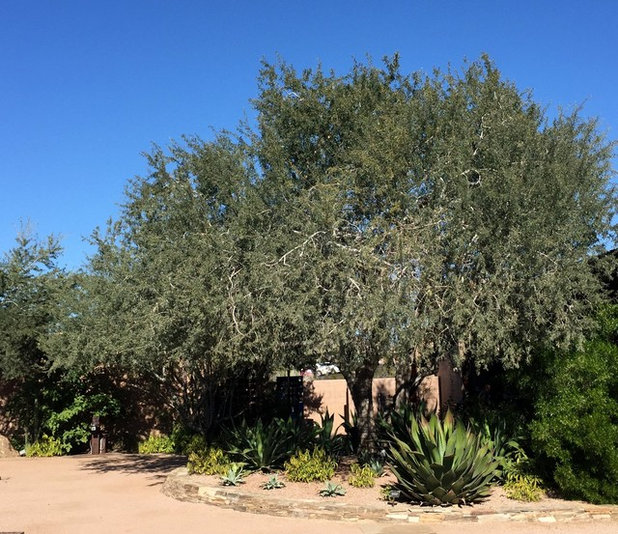
Noelle Johnson Landscape Consulting
Botanical name: Olneya tesotaCommon name: Ironwood
Origin: Native to the Sonoran Desert regions of southeastern California, Arizona and Mexico; can also be found growing in the Baja region of Mexico
Where it will grow: Hardy to 20 degrees Fahrenheit (USDA zone 9; find your zone)
Water requirement: Extremely drought tolerant once established and is able to survive on natural rainfall; however, appreciates being watered once a month in summer
Light requirement: Full sun
Mature size: 30 feet tall and wide
Benefits and tolerances: Drought tolerant; the seeds are an important food source for birds and small mammals
When to plant: Fall and spring
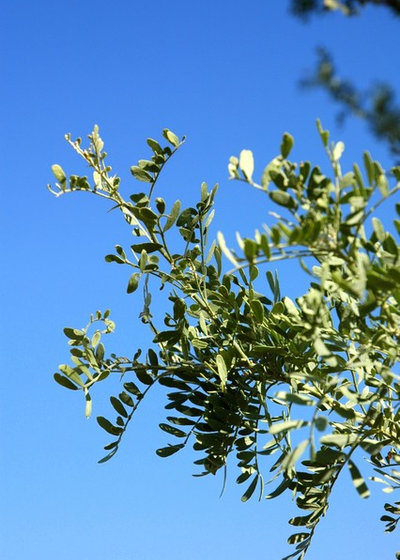
Noelle Johnson Landscape Consulting
Distinguishing traits. Gray-green leaflets remain on ironwood throughout the year, except for extremely cold low-desert winters. The leaves will also fall in response to extreme drought. Occasionally, the leaves will drop just before it blossoms in spring. Pairs of small, curved thorns can be found at the base of the leaves, and each leaf is made up of ½-inch-long oval leaflets.
Ironwoods found growing naturally in the desert are multistemmed shrubs 25 feet tall and wide with large, woody trunks. Their large canopy creates filtered shade and provides an ideal microclimate in which many other desert native plants, such as saguaro cactus (
Carnegiea gigantea), senita cactus (
Pachycereus schottii) and night-blooming cereus (
Peniocereus greggii), can germinate and grow. In addition, its relatively tall height makes it a popular perching spot for birds of prey, while small mammals seek shelter from the sun underneath its branches.
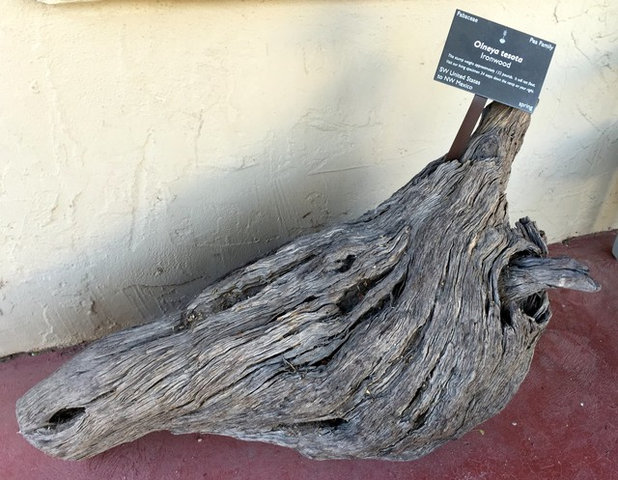
Noelle Johnson Landscape Consulting
This piece from an ironwood tree weighs 132 pounds and will sink in water because it is so dense. Because the wood is so resistant to decay, trunks from dead ironwood trees can last 1,600 years.
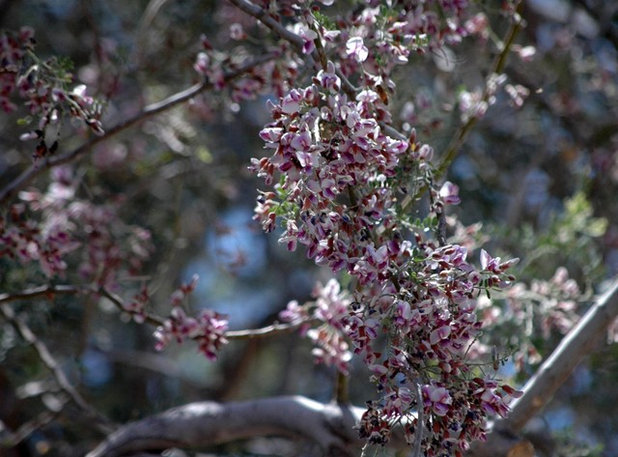
Noelle Johnson Landscape Consulting
With the arrival of spring, ironwood becomes covered with thousands of tiny pinkish-lavender flowers. Because the flowers are so small (⅓ inch long), their appearance is not always immediately obvious except for the trees’ appearing to be covered by a dusty lavender haze. Once you get closer, the small, beautiful flowers become clearly evident. Fuzzy brown seedpods 2 inches long appear after the flowering ceases in early summer.
Ironwoods grow 1 foot to 2 feet per year in managed landscapes, but in the wild they grow much more slowly. Any pruning should be limited to removing no more than 20 percent of its branches in a given year. Supplemental water, once a month May through September, will slightly increase the rate of growth.
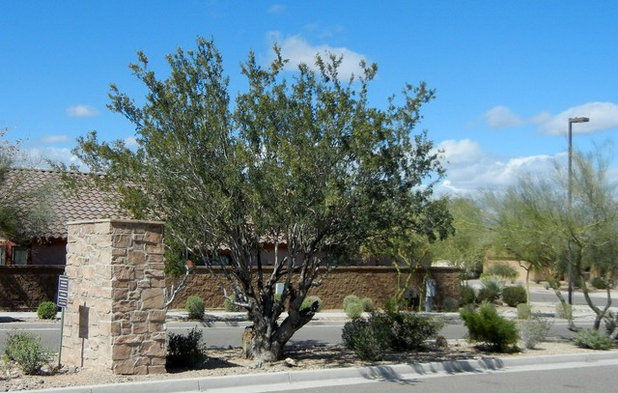
Noelle Johnson Landscape Consulting
How to use it. Because of their large size and beautiful branch architecture, ironwood trees are often used as a focal point in the landscape. Use one as the centerpiece of a circular driveway island or in a roadway median. It also can be used to anchor a front yard — arrange several pairs of large boulders nearby for great textural contrast.
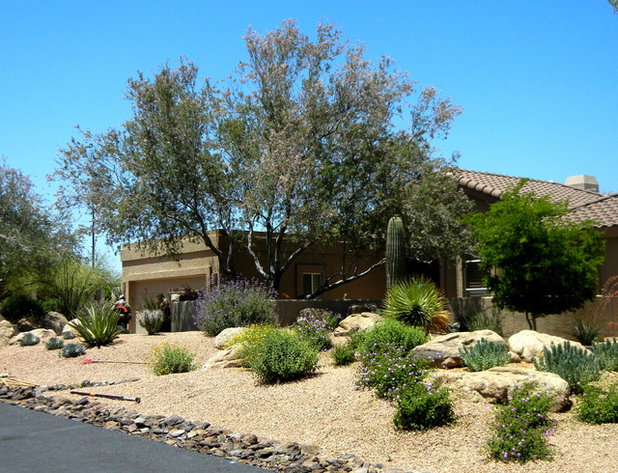
Noelle Johnson Landscape Consulting
Plant several yellow-flowering angelita daisy (
Tetraneuris acaulis) or damianita (
Chrysactinia mexicana) ground covers nearby, where their dark green foliage can provide color contrast with the dusty-green foliage of ironwood. Santa Rita prickly pear (
Opuntia santa-rita) and Queen Victoria agave (
Agave victoria-reginae) also look great near ironwood trees, but will do best when planted out of range of its shade.
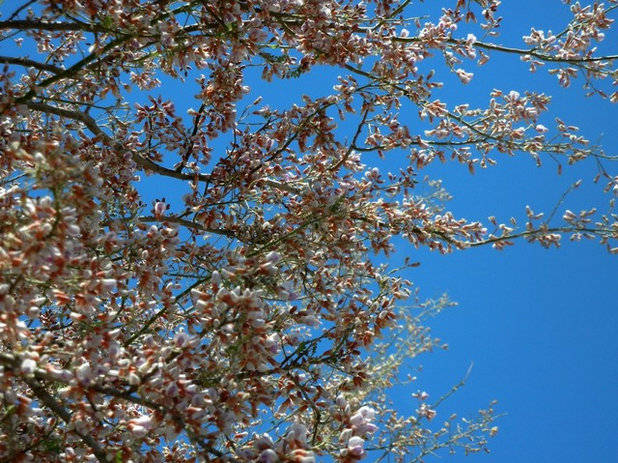
Noelle Johnson Landscape Consulting
Planting notes. Ironwood trees need well-drained soil and full sun. They require no supplemental fertilizer, because they make their own nitrogen. After planting your tree, water it three to four times a month from May through September and monthly in spring and fall for the first year. During the next two to four years, gradually space out the watering frequency until the tree becomes established.





